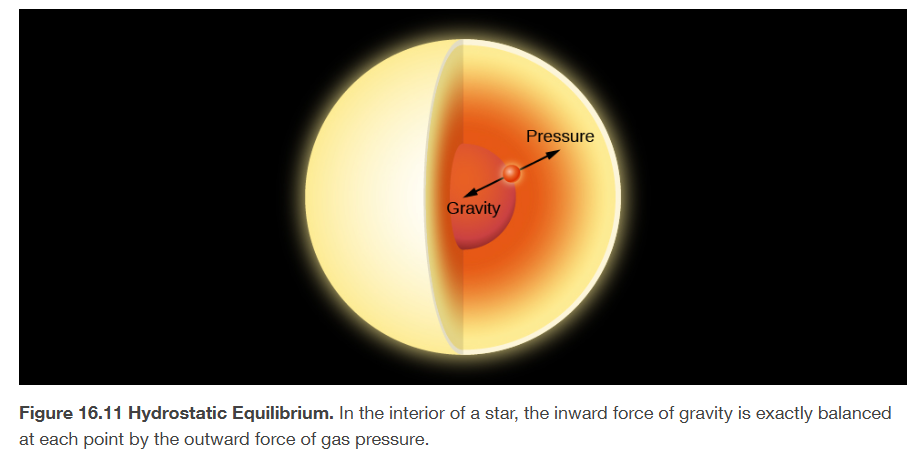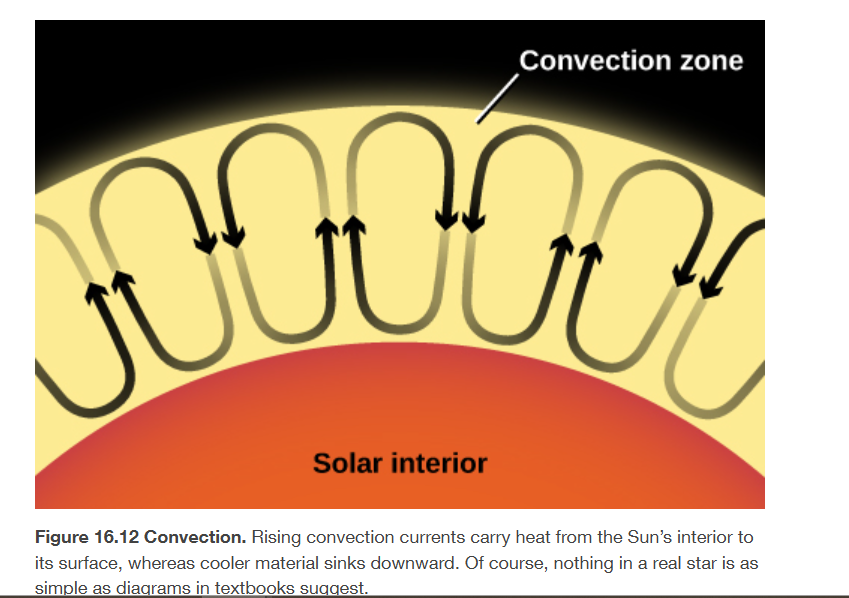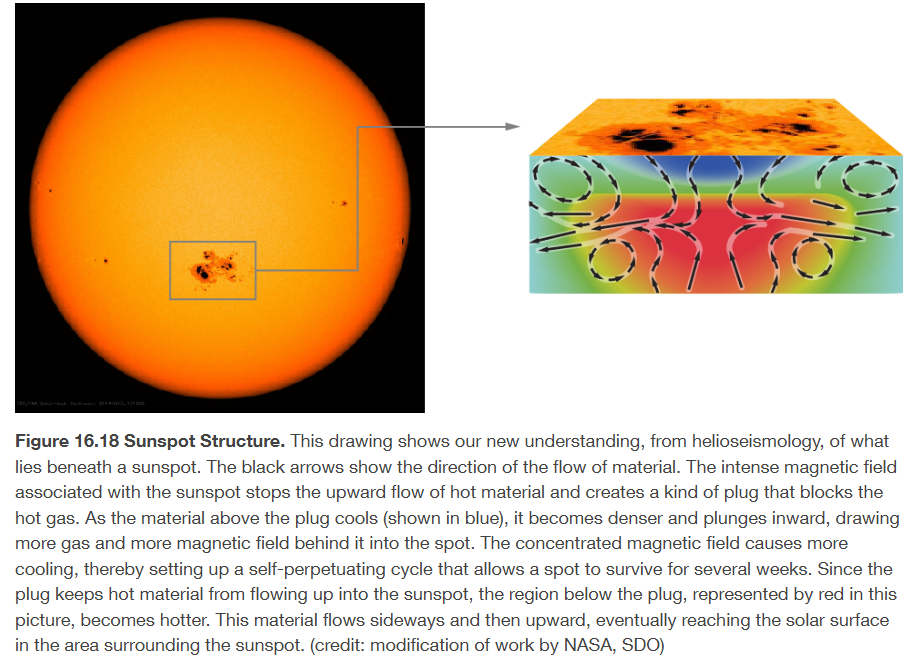chapter 16.3; the solar interior; theory & 16.4; the solar interior; observations
1/7
There's no tags or description
Looks like no tags are added yet.
Name | Mastery | Learn | Test | Matching | Spaced |
|---|
No study sessions yet.
8 Terms
sun is plasma
the sun is so bot all the material inside is in the form of an ionised gas
plasma acts much like a hot gas
stability of the sun
in a condition of hydrostatic equilibrium
all forces within the Sun are balanced
at each point of the Sun the temperature, pressure, density etc are at constant values
Calculations show that, in order to exert enough pressure to prevent the Sun from collapsing due to the force of gravity, the gases at its center must be maintained at a temperature of 15 million K.

conduction
atoms or molecules pass on their energy by colliding with others nearby
convection
currents of warm material ruse, carrying their energy with them into cooler layers
stellar convection: occurs as currents of hot has flow up and down through the star

radiation
energetic photons move away from hot material and are absorbed by some material to which they convey some or all of their energy
not an efficient means of energy transport ins tars because gases in stellar interiors are very opaque, that is, a photon does not go far before it is absorbed
solar pulsations
Sun pulsates (expands and contracts)
can be detected by measuring the radial velocity of the solar surface (the speed of which it moves towards or away from us)
The typical velocity of one of the oscillating regions on the Sun is only a few hundred meters per second, and it takes about 5 minutes to complete a full cycle from maximum to minimum velocity and back again.
The change in the size of the Sun measured at any given point is no more than a few kilometers.
study of solar oscillations: helioseismology
convection extends inward from the surface 30% of the way toward the center
Pulsation measurements also show that the differential rotation that we see at the Sun’s surface, with the fastest rotation occurring at the equator, persists down through the convection zone.
Below the convection zone, however, the Sun, even though it is gaseous throughout, rotates as if it were a solid body like a bowling ball.
sunspot structure
The downward-flowing cool material acts as a kind of plug that block the upward flow of hot material, which is then diverted sideways and eventually reaches the solar surface in the region around the sunspot.
This outward flow of hot material accounts for the paradox that the Sun emits slightly more energy when more of its surface is covered by cool sunspots.

solar neutrinos
3% of total energy generated by nuclear fusion in the Sun is carried away by neutrinos
35 million billion (3.5 × 1016) solar neutrinos pass through each square meter of Earth’s surface every second
neutrinos change to a different type during their journey from the center of the Sun through space to Earth in a process called neutrino oscillation